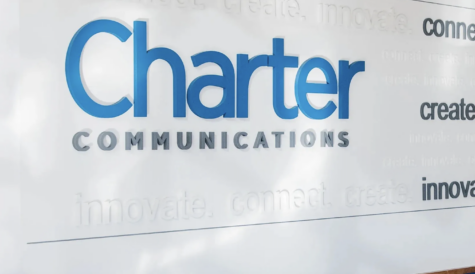Gearing up for the Ultra HD future
For some time now, Ultra HD has been touted as the ‘next big thing’, arriving on a TV screen near us in the near future. It’s a sign of technology in its relative infancy that key industry stakeholders have yet to finalise the particulars but the promise is compelling; a new generation of picture quality providing pin sharp detail, increased depth of colour and smooth movement at resolutions up to four times higher than normal HD, writes Darren Fawcett, Chief Technology Engineer, Pace.
The revolution that is promised with Ultra HD has stirred up debate on its commercial viability to deliver returns for broadcasters, operators and manufacturers. However, industry stakeholders agree that Ultra HD represents a huge step change in performance with cable and satellite operators now looking to deliver this super high-quality experience to their subscribers as more 4K content is rolled out. Can Ultra HD succeed where 3D failed and are there signs that consumers will be willing to embrace this more immersive viewing experience?
A burgeoning market
Ultra HD was a hot topic at this year’s IBC and momentum certainly seems to be building with figures highlighting that market demand will grow rapidly over the next few years.
Recent predictions from analysts are that Ultra HD TV shipments will reach 22 million units in 2017 whilst a CEA report reveals that Ultra HD TV shipments in the US should increase from 57,000 this year to 450,000 in 2014 and 1.2 million in 2015.
The majority of DVB members believe that some form of Ultra HD services will be viable by 2016 although this may be sooner: a significant proportion believe Ultra HD TV services should be available in 2015. Sky Deutschland is the biggest advocate to date and the 2014 World Cup will provide an important showcase for the technology.
Critical success factors for launch include the availability of content. Test Broadcasts are starting in earnest, with European, Asian and US operators, in parallel with the increased filming of Ultra HD content (both The Hobbit and Skyfall were Ultra HD). Technologies that facilitate robust delivery of bandwidth intensive, high-frame formats, improved compression technologies are now finalised.
The frame rate and high image quality – Ultra HD will deliver resolution of 3840 x 2160 – means that movies will be the initial forerunner of content delivered in this format. This will be the natural starting point with operators eventually looking to deliver content further down the chain. Whilst the 60Hz frame rate is suitable for films it may, however, be insufficient for sports coverage where higher frame rates will be required to capture the movement and panning in sharp detail. The more advanced 120Hz frame rate will be available 2017/18, although at present, HDMI2.0 only supports up to 60Hz.
Meeting the bandwidth challenge
The delivery infrastructure and bandwidth challenge will be critical in ensuring that the full potential of the format is realised. The compression technology, that is, the software and hardware for encoding and decoding Ultra HD, is now advancing to give operators significant bandwidth savings which helps them increase the number of channels they can offer. There has been recent agreement on the High Efficiency Video Coding (HEVC) compression, required to distribute Ultra HD via broadband and over-the-air transmission to the home. This compression technology which can deliver up to 50% bandwidth savings – double the data compression ratio of H.264/MPEG-4 AVC – provides the means through which Ultra HD content can be delivered to the home, from satellite or cable network. In the UK, where Ofcom has reported that the average download speed for broadband in the UK has reached 14.7Mbps, there is no reason why it’s not possible for a home user to sustain the data for an Ultra HD movie, through a broadband connection.
Shifting Demand
These opportunities will, of course, hinge on the difference that Ultra HD will make for customers. The high pixel count is certainly suited to the larger screens of 55 inch plus which are becoming more prevalent in homes and, overall, viewers today are more discerning, both in terms of the quality of viewing experience they expect and the choice they demand. Certainly the extended colour gamut, higher dynamic range and faster frame rate adds some ‘magic’ to the image creating an immersive experience, which does present real commercial value for an operator’s offering. Competing for, and winning, the loyalty of these users means meeting these evolving tastes and delivering an exceptional experience. Choice is everything.
Whilst it’s early days, the technology is evolving to make this an enticing offering for home users. Manufacturers are ramping up their efforts to deliver Ultra HD screens, in anticipation of more content from broadcasters which, coupled with advancements in compression technology to ensure a high quality viewing experience, means that the future looks bright for Ultra HD.




